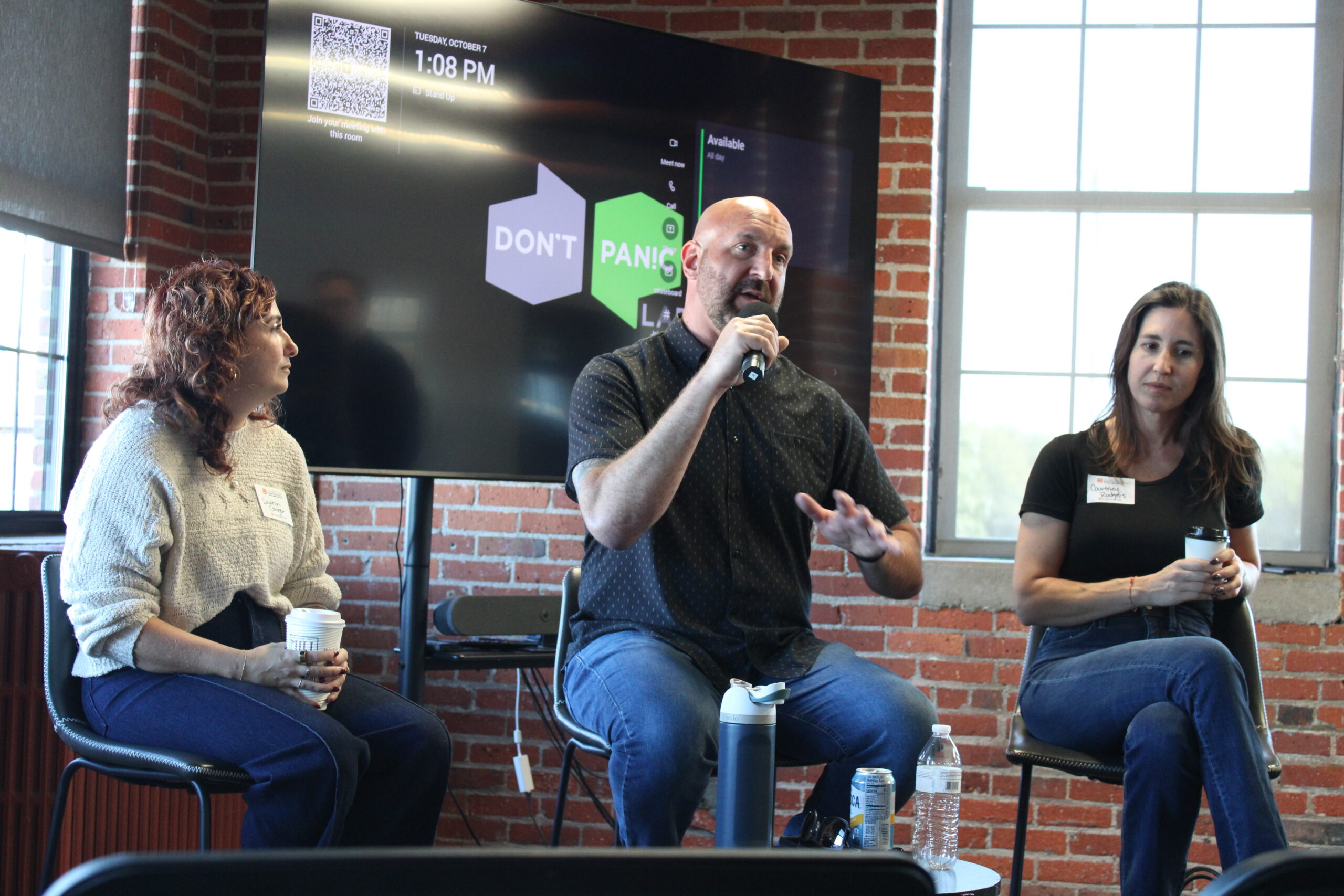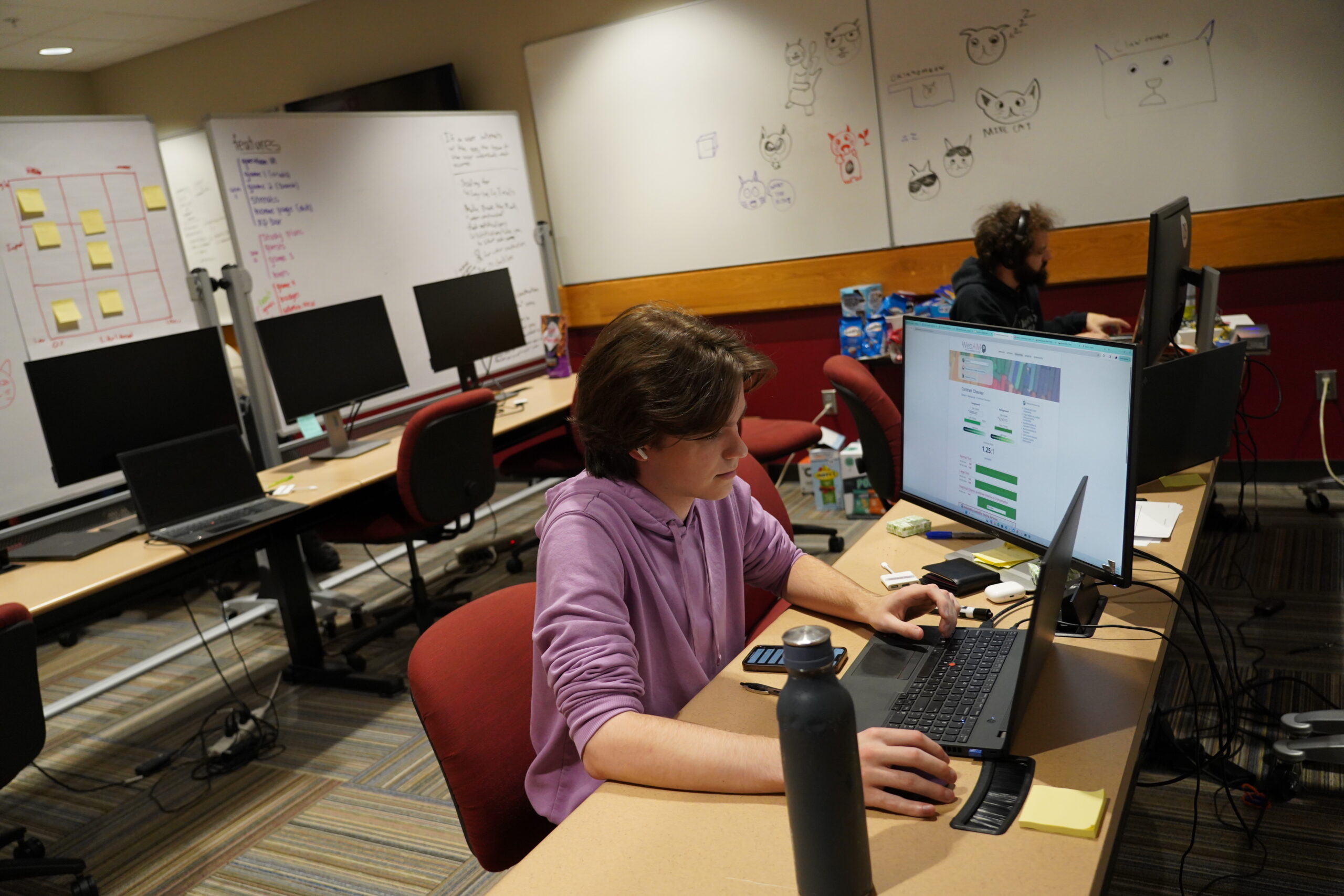
Google’s Milo Medin discusses the Nexus 7 tablet’s role in Google Fiber TV.
Google today revealed more about the vision for the future of its Fiber project, and that vision is in high-definition.
Google Fiber, the company’s first large-scale foray into providing internet service, will also feature a prominent and potentially disruptive HD television offering. And all of that technology could be available to residential customers in parts of Kansas City, Kan. and Kansas City, Mo. as early as September.

During an event today at the company’s previously unmarked and top-secret “Fiber Space” (left) just east of the Kansas border in midtown Kansas City, Mo., Google representatives lifted the veil on a project that has largely been shrouded in secrecy for 16 months. An hour-long presentation, featuring a variety of videos, demonstrations and remarks by Google officials, marked the most significant Fiber-related development since last year’s announcement that Google had chosen Kansas City, Kan. (and, eventually, its neighbor to the east) to serve as the test lab for its ultra high-speed network. The network will deliver internet at one-gigabit speeds, or about 100 times faster than standard broadband.
But whip-quick internet connections were already a known part of the Fiber equation. The most notable new development to come out of today’s proceedings was Google Fiber TV, an offering that heretofore was a subject of considerable speculation but no official comment from representatives of the Mountain View, Calif. company.
Google will offer three tiers of residential Fiber plans. The top tier, which costs $120 a month plus taxes and fees (and a $300 construction fee that’s waived with a two-year subscription) features: a “network box” with four ethernet ports and Wi-Fi capabilities; a “TV box” that delivers some 170 channels, on-demand shows and internet content, all in HD; a “storage box” that can hold up to 500 hours of HD shows and record up to eight programs simultaneously; one terabyte of cloud storage; and a Nexus 7 tablet that Google believes represents the future of TV remotes.

“With the most advanced internet in America, you should have the most advanced TV experience in America, too,” Milo Medin, Google’s vice president of Access services, said of Google Fiber TV.
(Right: The TV, storage and network boxes offered as part of the top tier of Google Fiber service.)
The second tier costs $70 a month plus taxes and fees (and the $300 construction fee, waived with a one-year commitment). It includes the network box and terabyte of cloud storage.
The third tier, which has no monthly fee attached, requires the $300 construction payment (or 12 payments of $25 for the first year) plus taxes and fees and guarantees at least seven years of free internet service at today’s average speeds.
So how can Fiber-hungry Kansas Citians get one of those tiers of service in their homes? By showing their need for speed. “We’re going to deploy our network wherever there’s enough interest,” said Kevin Lo, the general manager of Google Access. “And we’re going to build sooner wherever there’s most interest.”
To that end, Google Fiber has divided the Kansas Citys into 128 “Fiberhoods” (map pictured below). Google will deploy its internet service wherever demand for it is highest, reflected by the percentage of residents in those neighborhoods that pre-register for the service (which requires a $10 fee) between today and Sept. 9.

Google spokeswoman Jenna Wandres said that after the Sept. 9 deadline, homes in neighborhoods with the highest demand could be connected “very soon” — a matter of weeks, maybe even days. Connections for businesses, Google said, will come later.
With Google’s demand-driven rollout plan, Kansas City’s staunchest Fiber supporters are being incentivized to evangelize.
Joe Reardon, the mayor of Wyandotte County and Kansas City, Kan., is among those already spreading the word. Citing the community-focused piece of Google’s plan — schools, libraries and public safety centers will get free Fiber connections in neighborhoods that receive the service — Reardon urged residents to express their interest.
“You know, it’s real simple,” he said. “Sign on to the internet, make the choice, put your $10 down and let’s get our neighborhoods wired up.”
Sly James is Reardon’s mayoral counterpart in Kansas City, Mo. Today, as they have since the start of Kansas City’s Fiber engagement, the mayors emphasized collaboration. At one point in a promotional video, James said: “Let’s do this for Kansas City, Kan.” Responded Reardon: “And let’s do this for Kansas City, Mo.”
Like Reardon, James today encouraged residents to take action, saying early access to gigabit speed should be accompanied by a sense of urgency.
“I think that it is a product that we can use to change the game,” James said. “This product doesn’t change anything; our application changes things. And that’s what this is really about. We have a commodity in Kansas City now that we have the first opportunity to play with, experiment with, innovate with, use to build entrepreneurship, see what we can do with it.”
Google officials, meanwhile, weren’t exactly eager to forecast the future of Fiber and the looming thundercloud of clashes with cable providers. Several Google representatives declined to discuss the company’s specific plans for expansion beyond Kansas City. But, in doing so, Medin offered a thought that should be music to Kansas City ears.
“Rather than talk about other communities,” he said, “we really want to make this community a success.”

Mayors Joe Reardon (left) and Sly James urged action and collaboration from Kansas City residents during Thursday’s Google Fiber event.
Credits: Photos by Michael Stacy.


